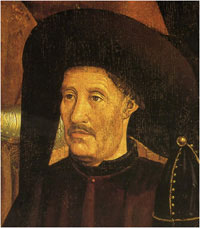Some history of Algarve
The evidence of the human settlement of the Algarve dates back to time immemorial. Examples of this presence are to be found in the Neolithic remains from many thousands of years ago and the more recent, but no less interesting, Roman archaeological sites. As the home to a range of ancient civilizations, the Algarve was also visited by many other peoples, inevitably brought to the region by the immense sea that bathes its shores.
More than five centuries of Moorish influence left their indelible imprint upon the region, beginning with its actual name: Al-Gharb, meaning The West. The long Moorish occupation of the territory, which lasted from the 8th to the 13th century, is still to be noted in the names of the towns and villages, in the region's agriculture, in the architecture of the monuments, the lacework patterns of the balconies, roof terraces and chimneys, or the whitewashed houses still to be seen in many Algarve villages. At that time, Silves was the central focus of the region because of its strategic geographical location.
|
||
 |
Some history of Portimão
Proof of a human presence in the locality since the Neolithic period is furnished by the extensive burial grounds at Alcalar and Monte Canelas and by other archaeological finds scattered across the municipality. The recent discovery at Vila Velha de Alvor of what are probably the remains of a village dating from the 2nd or 3rd century B.C. and the archaeological and maritime artifacts recovered from the Arade river and the coastal areas of the municipality throw new light on the importance of the region during the period when Atlantic trade routes with the Mediterranean and North Africa were developing, following the emergence of Phoenician, Greek and Carthaginian factories.
Although theories that variously identify Portimão with Portus Hannibalis, Portus Magnus and Porcimunt remain controversial, there can be no doubt about the Roman presence in the city and the surrounding municipality. Amphorae, coins, fish-salting tanks, bronze objects, cisterns, sundry building materials, the remains of buildings at Vale de Arrancada, Montemar, Baralha and above all the major "villa" site at Abicada bear eloquent witness to this fact.
In material terms, the Moorish heritage is restricted to occasional finds of pottery and coins. But the Moorish influence endures in the distinctive shape of chimneys and water wheels, in small chapels and buildings made of the mixture of clay, rubble, sand and lime known as "taiga", in the region's agriculture and in some of the types of vegetation to be found.
Modern Portimão came into being in the reign of king Afonso V (1463) with the granting of certain privileges to a settlement which would come to be called Vila Nova de Portimão and around which a ring of defensive walls would later be built. Portimão was ideally placed to enjoy the fruits of the boom in international trade stimulated by the great Portuguese voyages of discovery and prospered as a haven for ships plying the African coast.
The earthquake of 1755 destroyed much of the town and prompted an economic decline that was reversed only towards the end of the 19th century by the return of trade, exports of dried fruit, milling, fishing and the fish-canning industry, activities which would continue into the 20th century. Portimão was made a city in 1924 by the then President of the Republic, the writer Manuel Teixeira Gomes, himself a native son of Portimão.
 |
In the last three decades tourism has been the motor driving Portimão's economy and the city can now claim to be the second most populous in the Algarve.





